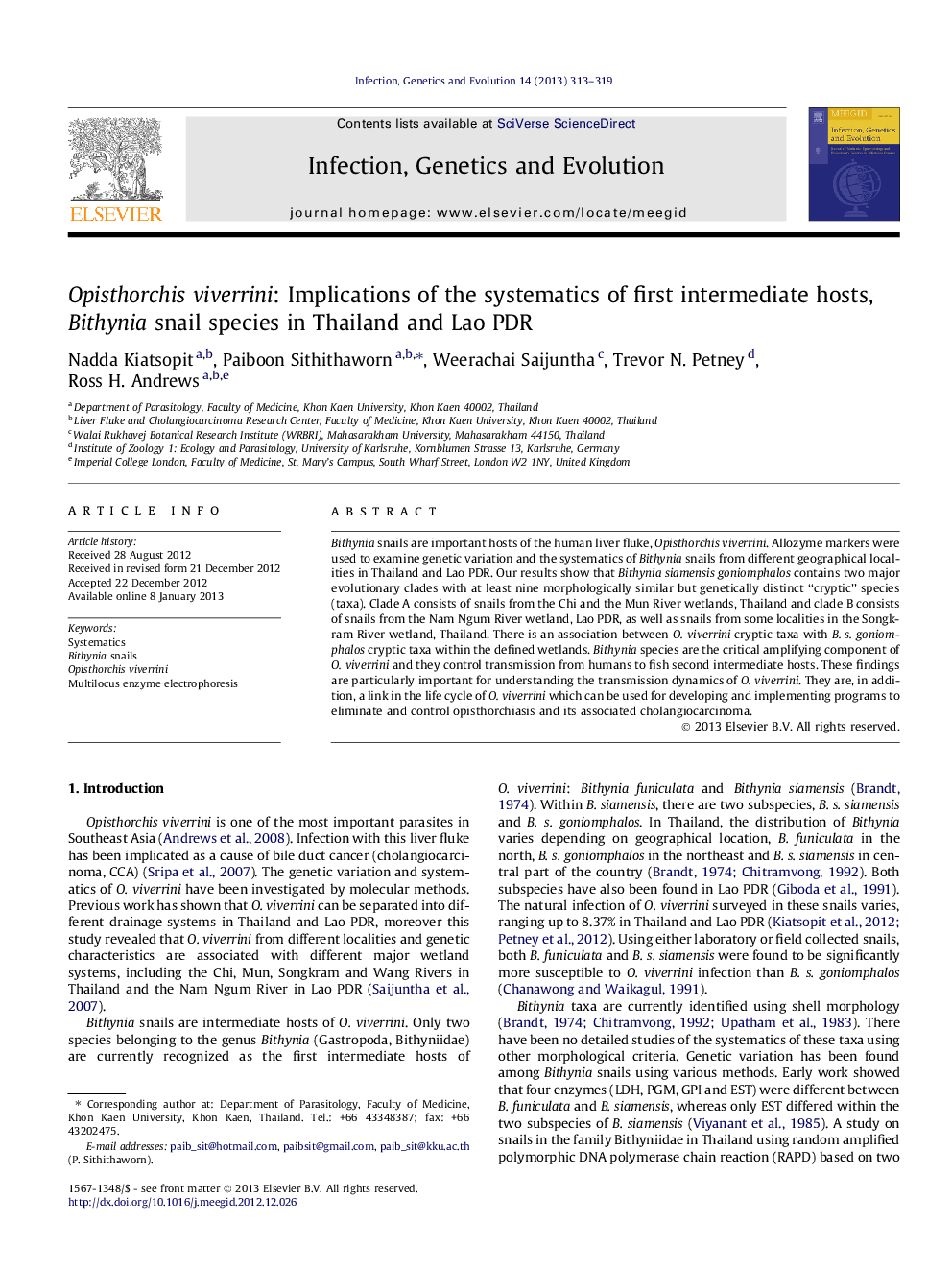| کد مقاله | کد نشریه | سال انتشار | مقاله انگلیسی | نسخه تمام متن |
|---|---|---|---|---|
| 5910939 | 1570189 | 2013 | 7 صفحه PDF | دانلود رایگان |

Bithynia snails are important hosts of the human liver fluke, Opisthorchis viverrini. Allozyme markers were used to examine genetic variation and the systematics of Bithynia snails from different geographical localities in Thailand and Lao PDR. Our results show that Bithynia siamensis goniomphalos contains two major evolutionary clades with at least nine morphologically similar but genetically distinct “cryptic” species (taxa). Clade A consists of snails from the Chi and the Mun River wetlands, Thailand and clade B consists of snails from the Nam Ngum River wetland, Lao PDR, as well as snails from some localities in the Songkram River wetland, Thailand. There is an association between O. viverrini cryptic taxa with B. s. goniomphalos cryptic taxa within the defined wetlands. Bithynia species are the critical amplifying component of O. viverrini and they control transmission from humans to fish second intermediate hosts. These findings are particularly important for understanding the transmission dynamics of O. viverrini. They are, in addition, a link in the life cycle of O. viverrini which can be used for developing and implementing programs to eliminate and control opisthorchiasis and its associated cholangiocarcinoma.
Highlights
- B. s. goniomphalos is a species complex of two clades with nine cryptic species/taxa.
- There is association between cryptic taxa of both snails and O. viverrini.
- This association is linked to defined wetlands in Thailand and Lao PDR.
Journal: Infection, Genetics and Evolution - Volume 14, March 2013, Pages 313-319